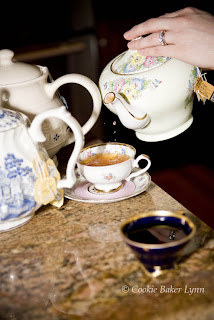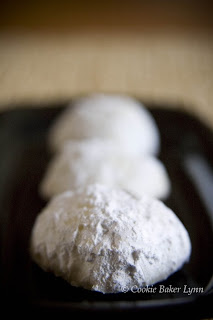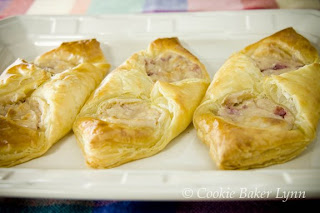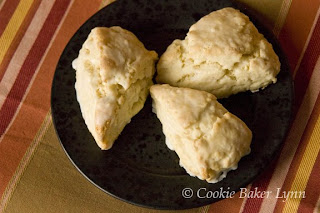
Glancing furtively side to side, I checked to make sure I hadn't been followed. Ducking into the book seller's shop I threaded through the tottering stacks of books to the gloom at the back. Following the instructions I'd read on the microdot, I opened The Bread Baker's Apprentice. As expected, the familiar voice issued forth:
"Your mission, should you choose to accept it, is to track down and recreate the secret formula for the internationally known Poilane-style miche, the artisanal bread known throughout France as the bread-baking gold standard. This will not be an easy challenge to undertake. There will be risks, it will be time consuming, and there might possibly be a funky smell on your counter. Be courageous. The Babes are counting on you."

I stumbled out of the bookshop, instructions recorded on my flashdrive, my head whirling. I felt way out of my league with this assignment. A Poilane-style Miche? The one that apprentice bread makers have to make from scratch? Well, scratcher than that, they have to build the fires for the bread ovens, grind and sift the wheat, and make their barm from the very beginning with wild yeast caught from the breeze. How was I to do that? My husband would kill me if I built a fire in the oven!
I tossed and turned that night, my head filled with voices of doubt that I could pull off this caper. I even put off the task, letting other jobs take priority. But the insistent message kept coming back to me. "The Babes are counting on you." I knew I couldn't let them down.
So I carefully read through the instructions. And then again. And again. Each time discouraged me more, till I read that I could skip the whole making the starter part, cutting the recipe down by 2/3's, and use the starter I had on my counter. I had taken half the starter (what would have been tossed off when I fed it), and let it sit, uncovered, on my counter for 5 days, every day tossing off half, and feeding it with 1/2 cup unbleached all-purpose flour and 1/2 cup tepid water. This was to catch the yeast present in the air and "wild" the starter. I named this new starter Wild Buffalo Bill.

To make the profile of the starter closer to the barm, the last feeding should be with rye flour. I didn't get that message, since I was with Q being outfitted with top-secret gadgets for the mission. But my straight all-purpose feeding worked fine. But since the consistency is different from the starter called for in the book, I used 3/4 cup of starter, rather than the 1 cup called for.
When I began the first part of the mission, making the firm starter, I ran into a temporal distortion field. Although the recipe says this is a two day operation (after your starter is made), mine stretched into 3 days. Maybe it was the cool kitchen, but my dough was in slow motion, taking forever to rise.
Fortunately, one of the gadgets which Q (aka Tanna) had outfitted me with was a tall, clear bucket with measurements marked on the side so I could easily see when the dough had doubled. If not for that, I would have been tempted to hurry along to the next step and have ended up with a lethal weapon of a loaf.
At the point where your firm starter is supposed to have doubled after 4 to 6 hours, mine had barely budged, so I left mine out overnight. In the morning it was tall and happy and I didn't have to wait for the firm starter to warm up since it hadn't been refrigerated.
When it came to putting together the dough, I suffered a setback. Although the directions quite clearly said to add 2-1/4 cups water, the mind-altering qualities of the temporal distortion field (or maybe insufficient caffeine), made me carefully measure 1-1/4 cups water and add that to the flour and starter. Good thing the recipe gave me permission to add more water as needed, because I was in a quandry as to how this dry ragged mess was supposed to become a smooth, supple wad of dough.

I read and re-read the directions until I saw my error. By that point I had no idea how much liquid I'd added. And my team was shouting at me to get a move on like the building was about to blow ("Mother, come on! Aren't you done yet?"), so I don't know if my dough was sufficiently kneaded.
At this point, the dough was supposed to rise, nearly doubling in 4 hours. In four hours my sorry fellow had barely budged, so again I left it overnight to rise. Shaping it in the morning was trouble-free and I was happy to slash it and send it into the steamy oven on a heated stone to bake away.
Because of the long bake time it did brown up. A lot. Almost blacken. In fact, the crust was the one issue we had with this bread. It took considerable sawing to pry off a piece. But the flavor of the bread was wonderful. Rich and complex. So, I succeeded. Probably not up to Peter Reinhart standards, but I came up with a darn good loaf, despite all my mistakes.
Since I didn't use the Barm directions from the book, I won't include them. But you can find them on the other Babes' sites.
 Poilane-style Miche
Poilane-style Miche - adapted from
The Bread Baker's Apprentice by Peter Reinhart
Firm Starter
1 cup (7 ounces) Barm or 3/4 cup wilded starter
2 cups (9 ounces) sifted medium grind whole wheat flour (I substituted 1/2 unbleached all-purpose flour and 1/2 whole wheat flour for the sifted flour)
About 1/2 cup (4 ounces) water, at room temperature
Final Dough
7 cups (32 ounces) sifted medium grind whole wheat flour
3-1/4 teaspoons (.81 ounce) salt (or 2 Tablespoons sea or kosher salt)
2 to 2-3/4 cups (18 to 22 ounces) water, lukewarm (90 to 100 degrees F.)
Semolina flour for dusting
This recipe makes 1 very large miche (large boule), or you can make several smaller boules.
(Make the firm starter, as follows, the day before making the bread)
1. Mix together the barm, flour, and enough water to form a firm ball In a 4-quart mixing bowl. Transfer the dough to a counter sprinkled with flour and knead for around 3 minutes, making sure the flour is fully hydrated. Place dough in an oiled bowl, rolling it around in the bowl until it's coated with oil. Cover the bowl with plastic wrap.
2. Ferment the dough at room temperature until it doubles in size--about 4-6 hours. Refrigerate overnight. You now have your firm starter.
3. 1 hour before making the dough, remove the starter from the fridge and cut it into 12 smallish pieces. Cover it with a towel or plastic wrap and let sit for 1 hour to warm.
4. Unless you're lucky enough to have a Magic Mil, you must knead the dough by hand as the dough is too big for other machines. Put the sifted whole-wheat flour, salt, and starter pieces in a large bowl, add 2-1/4 cups of the water, then stir with a metal spoon, until the ingredients come together into a soft ball. Add more water and flour as neccesary.
5. Put the dough on a floured counter and knead the dough for 12 to 15 minutes Add the flour and water to make a supple, tacky but not sticky dough. Make sure all the ingredients are well incorporated. Lightly oil a large bowl and transfer the dough to the bowl, rolling it around to coat it with oil. Cover the bowl with plastic wrap.
6. Let the dough ferment at room temperature for approximately 4 hours, or until the dough has nearly doubled in size.
7. Transfer the dough to the counter and gently form it into a large boule. Proof the dough in a banneton or prepare a proofing bowl large enough to hold the dough when it rises to nearly double in size. Place the dough, seam side up, in the banneton or bowl and mist the exposed part of the dough with spray oil. Cover with a cloth or plastic wrap.
8. Let the dough proof at room temperature for 2 to 3 hours. The dough should grow about 1-1/2 times in size. You can also retard it overnight in the refrigerator. But, if retarding the dough, make sure to remove the dough from the refrigerator 4 hours before you plan bake it.
9. Prepare your oven for hearth baking. Set an empty steam pan in place in the bottom rack of the oven. Preheat the oven to 500°F. Remove the cloth or plastic layer on top of the dough 10 minutes before baking.
10. Dust a peel or the back of a sheet pan generously with semolina flour or cornmeal. Gently and carefully turn the dough onto the peel or pan, and gently remove the cloth liner off the dough (if you used it). Score the top of the dough with a large pound sign. Slide the dough onto the baking stone (or bake directly on the sheet pan). Pour 2 cups hot water into the steam pan and close the door. Immediately lower the oven setting to 450°F. After 25 minutes of baking, turn the loaf 180 degrees and lower the oven setting to 425°F. Let the bread bake for another 30 to 40 minutes, until the dough registers 200°F in the center. The bread should be very deeply browned. If the top begins to look too dark, drape it with a sheet of aluminum foil pressed on top. (I had to do that step, as my bread became quite dark). If the bottom gets too dark before the bread is done, put the bread on an inverted sheet pan, to protect the bottom.
11. Transfer the bread to a rack and let cool for at least 2 hours before slicing or serving. Store the bread in a brown paper bag. It should be good for 5 to 7 days.

Be sure to check out the lovely loaves from my fellow Baking Babes.
A Fridge Full of Food,
Bake My Day,
Grain Doe,
I Like to Cook,
Lucullian Delights,
My Kitchen In Half Cups,
Nottie Van Lien,
The Sour Dough,
What Did You EatAnd if you'd like to try this loaf and be a Bread Baking Buddy and receive a badge, you have fourteen days to make and post the bread and send it to our host kitchen of the month,
What Did You Eat. You have until June 2nd to bake the bread and post about it on your blog with a link to the Kitchen of the Month’s post about the bread. E-mail the Kitchen of the Month with your name and a link to your post OR leave a comment on the Kitchen of the Month’s blog that you have baked the bread and a link back to your post. Kitchen of the Month will do a round-up of our Bread Baking Buddies at the end of the baking period and send you a BBB badge shortly after you notify her of baking the bread.
No blog, No problem - just e-mail the Kitchen of the Month with a photo of the bread you baked and you’ll be included in the round-up.
Babes on Hiatus: Living on Bread and Water and Thyme for Cooking.

 I've had some people ask how Sarah's shower was and whether or not I was going to share pictures. In particular, one friend who's been housebound with plaster on her foot. How could I say no to an invalid? So here's a brief recap of the shower, with recipe at the end.
I've had some people ask how Sarah's shower was and whether or not I was going to share pictures. In particular, one friend who's been housebound with plaster on her foot. How could I say no to an invalid? So here's a brief recap of the shower, with recipe at the end. Along with the opera cake (see previous post), we had plenty of food to sustain us through the shower. The hostess provided small tea sandwiches and I brought lemon-glazed madeleines which were a big hit. With their dainty size and zip of citrus, it was hard to stop at one. Good thing there were plenty!
Along with the opera cake (see previous post), we had plenty of food to sustain us through the shower. The hostess provided small tea sandwiches and I brought lemon-glazed madeleines which were a big hit. With their dainty size and zip of citrus, it was hard to stop at one. Good thing there were plenty! There were a couple of non-traditional party games. When we got our name tags they each had two tiny clothes pins on them. If you could make someone say the words dress, wedding, apartment, or Sam, then you could take one of their clothes pins away. The one with the most clothes pins at the end of the shower got a prize. I lost my clothes pins almost immediately.
There were a couple of non-traditional party games. When we got our name tags they each had two tiny clothes pins on them. If you could make someone say the words dress, wedding, apartment, or Sam, then you could take one of their clothes pins away. The one with the most clothes pins at the end of the shower got a prize. I lost my clothes pins almost immediately. 






























